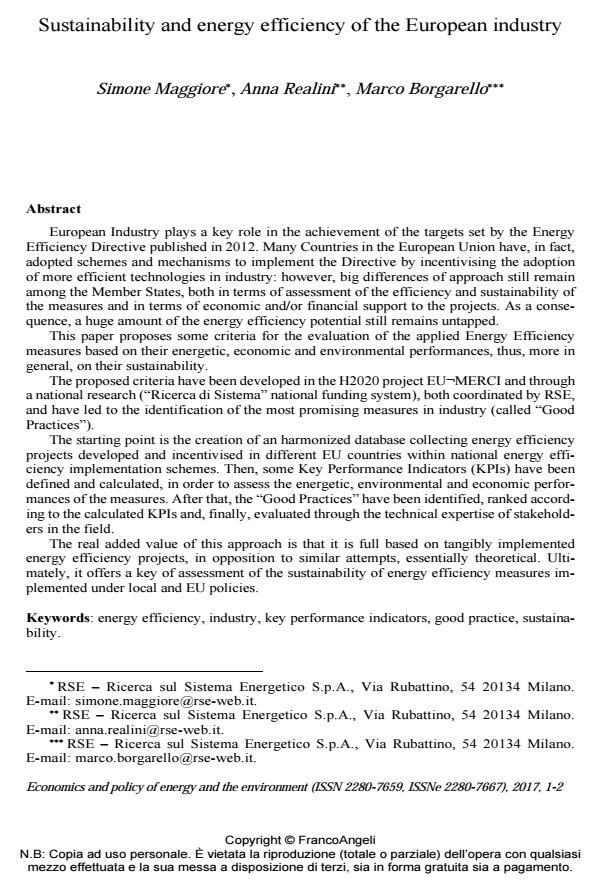Sustainability and energy efficiency of the European industry
Titolo Rivista ECONOMICS AND POLICY OF ENERGY AND THE ENVIRONMENT
Autori/Curatori Simone Maggiore, Anna Realini, Marco Borgarello
Anno di pubblicazione 2017 Fascicolo 2017/1-2
Lingua Inglese Numero pagine 15 P. 31-45 Dimensione file 225 KB
DOI 10.3280/EFE2017-001003
Il DOI è il codice a barre della proprietà intellettuale: per saperne di più
clicca qui
Qui sotto puoi vedere in anteprima la prima pagina di questo articolo.
Se questo articolo ti interessa, lo puoi acquistare (e scaricare in formato pdf) seguendo le facili indicazioni per acquistare il download credit. Acquista Download Credits per scaricare questo Articolo in formato PDF

FrancoAngeli è membro della Publishers International Linking Association, Inc (PILA)associazione indipendente e non profit per facilitare (attraverso i servizi tecnologici implementati da CrossRef.org) l’accesso degli studiosi ai contenuti digitali nelle pubblicazioni professionali e scientifiche
European Industry plays a key role in the achievement of the targets set by the Energy Efficiency Directive published in 2012. Many Countries in the European Union have, in fact, adopted schemes and mechanisms to implement the Directive by incentivising the adoption of more efficient technologies in industry: however, big differences of approach still remain among the Member States, both in terms of assessment of the efficiency and sustainability of the measures and in terms of economic and/or financial support to the projects. As a consequence, a huge amount of the energy efficiency potential still remains untapped. This paper proposes some criteria for the evaluation of the applied Energy Efficiency measures based on their energetic, economic and environmental performances, thus, more in general, on their sustainability. The proposed criteria have been developed in the H2020 project EU¬MERCI and through a national research ("Ricerca di Sistema" national funding system), both coordinated by RSE, and have led to the identification of the most promising measures in industry (called "Good Practices"). The starting point is the creation of an harmonized database collecting energy efficiency projects developed and incentivised in different EU countries within national energy efficiency implementation schemes. Then, some Key Performance Indicators (KPIs) have been defined and calculated, in order to assess the energetic, environmental and economic performances of the measures. After that, the "Good Practices" have been identified, ranked according to the calculated KPIs and, finally, evaluated through the technical expertise of stakeholders in the field. The real added value of this approach is that it is full based on tangibly implemented en-ergy efficiency projects, in opposition to similar attempts, essentially theoretical. Ultimately, it offers a key of assessment of the sustainability of energy efficiency measures implemented under local and EU policies.
Parole chiave:Energy efficiency, industry, key performance indicators, good practice, sustainability.
Jel codes:Q3, Q4
Simone Maggiore, Anna Realini, Marco Borgarello, Sustainability and energy efficiency of the European industry in "ECONOMICS AND POLICY OF ENERGY AND THE ENVIRONMENT" 1-2/2017, pp 31-45, DOI: 10.3280/EFE2017-001003